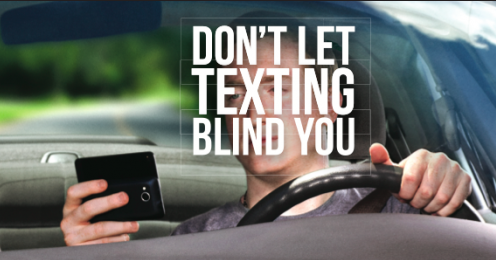By Yaël Ossowski | Watchdog.org
As Old Man Winter swoops into Vermont, the state government wants to be sure drivers are paying attention.
“Our crews just completed a weekend marathon of plowing, and are now here preparing for the next storm to arrive,” announced Gov. Peter Shumlin at a press conference Tuesday. “And as hard as they work plowing snow, they also look for new ways to make roads safer.”
What Shumlin offered is an initiative that has very little to do with snow, but which will affect anyone driving on a Vermont road: stiffer penalties aimed at stopping distracted driving.
Starting Jan. 1, the use of a hand-held device, such as an MP3 player, GPS, or cell phone in a work zone will be banned outright and could carry a fine as high as $479 for the second offense, according to the state Department of Motor Vehicles.
They’ll also up the penalty for anyone caught texting at the wheel, increasing from two to five points on a violator’s driver’s license, which would cause a steep increase in insurance rates.
“All the plowing and salting in the world won’t help us if people don’t slow down, put the phone down, put their hands on the wheel and focus on the road,” said Dave Blackmore, the transportation administrator for District 5 who spoke along with Shumlin.
Laws against distracted driving have been on the books in several states for many years, but their effect has proved murky once put under the microscope.
A 2012 study commissioned by the American Automobile Association and conducted at the University of North Carolina’s Highway Safety Research Center found that use of electronic devices comprised only 6 percent of all distracted behavior at the wheel, far behind other behaviors such as communicating with passengers, eating and drinking or adjusting a vehicle’s controls.
Moreover, the researchers concluded that use of electronics was unlikely a leading cause of major accidents.
“Electronic device use and other distracted driver behaviors were strongly associated with looking away from the roadway, although electronic device use was only weakly related to serious incidents,” concluded the authors.
That’s a much softer assessment than the one offered by researchers who examined texting bans in several states throughout the nation.
“Texting bans haven’t reduced crashes at all,” said Adrian Lund, president of the Insurance Institute for Highway Safety, in a 2010 study. “In a perverse twist, crashes increased in three of the four states we studied after bans were enacted. It’s an indication that texting bans might even increase the risk of texting for drivers who continue to do so despite the laws.”
A 2011 white paper put together by the Vermont Legislative Research Service doubted the efficiency of laws banning phones at the wheel, and concluded that all major research has “yet to show that state bans on cell phone use have significantly decreased distracted driving and accidents.”
Vermont had 330 major accidents in 2012, according to the Department of Public Safety, and eight, or just 2 percent, were found to be caused by the use of electronics at the wheel.
While distracted driving remains an issue for auto safety, it has also become an important way for states to grab federal dollars.
Federal initiatives to combat distracted driving totaled $17.5 million in 2013, distributed mostly in the form of block grants to the states which “enact and enforce” the toughest laws restricting the use of electronic devices at the wheel, according to the U.S. Department of Transportation.
Most of the money is designated for advertising the state’s distracted driving laws, including the use of social media and television spots.
Vermont didn’t receive any funding for 2013, but with its increased penalties for cell phone use at the wheel in work zones and texting while driving, it may be a prime candidate for 2014.
Yaël is a national reporter for Watchdog.org. Reach him by email at [email protected] and follow him @YaelOss.


